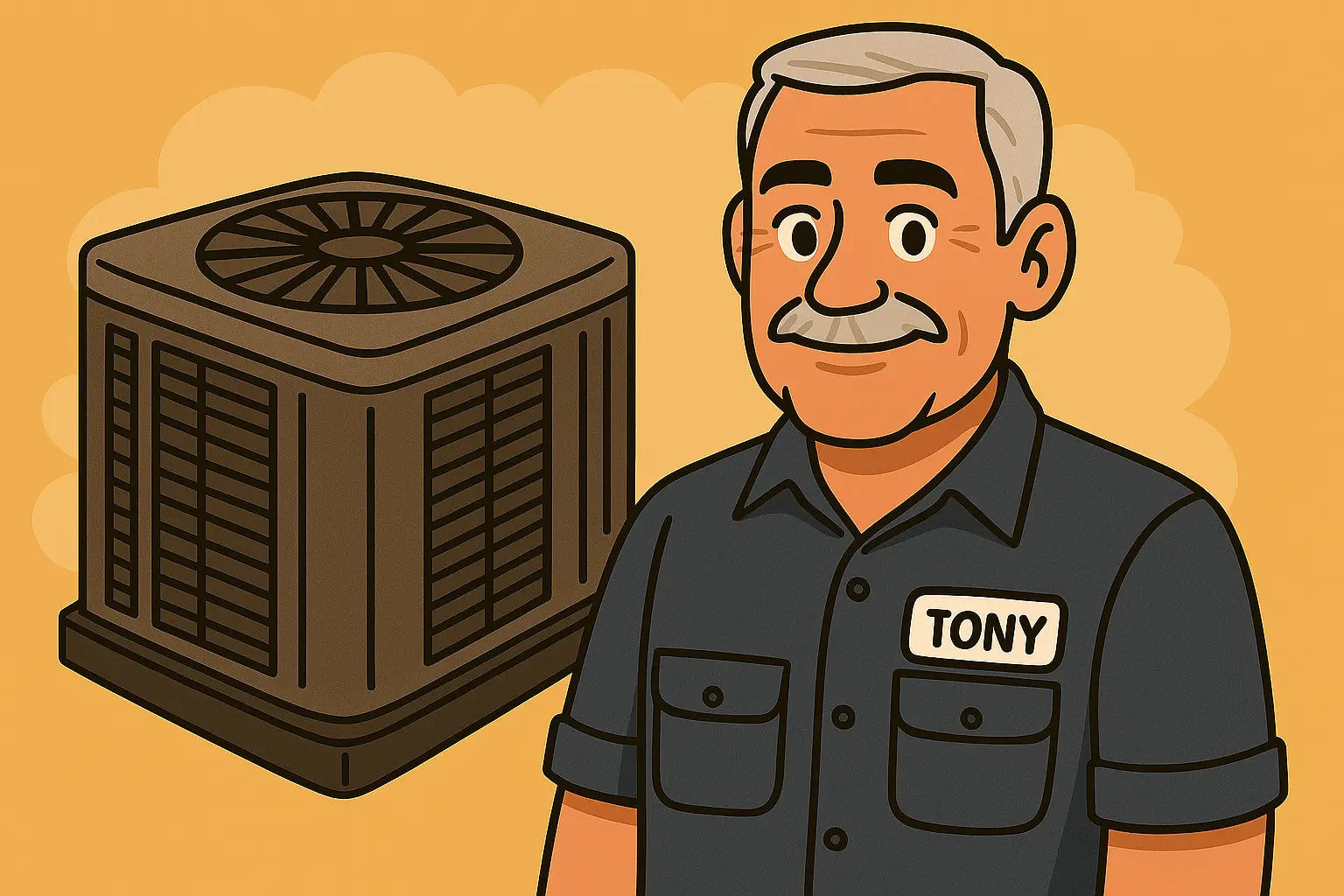From Tony’s Toolbox: Let's Thaw Out the Truth 🧊
Hey folks—Tony here. You’d be surprised how many calls I get in the middle of a heatwave from panicked homeowners saying, “My AC’s blowing warm air and it’s frozen over!” And no, your system’s not auditioning for the next Frozen sequel. A frozen AC is usually trying to tell you something’s wrong—bad airflow, low refrigerant, dirty coils—you name it.
So if you walked outside and saw your AC covered in ice like a popsicle, don’t freak out. Let’s run through the causes and how you can fix 'em before calling in the cavalry.
1. Poor Airflow: The #1 Culprit Behind a Frozen AC
When airflow slows down, coils can’t transfer heat effectively. That makes the refrigerant inside the evaporator coil too cold—and bam, ice forms.
Common causes of poor airflow:
-
Dirty air filters (replace those bad boys monthly!)
-
Blocked return vents
-
Clogged evaporator coils
-
Failing blower motor
According to the Department of Energy, one of the most important maintenance steps for preventing freeze-ups is changing your filter regularly. Sounds basic, but you’d be shocked how often this is overlooked.
Tony’s Tip: Use a MERV 8–11 filter unless your HVAC tech tells you otherwise. Don’t go overboard on high-MERV filters if your system isn’t built for it.
2. Low Refrigerant = Major Ice Risk
Refrigerant’s job is to absorb and move heat. But if there’s a leak and refrigerant levels drop, pressure inside the system plummets—and the evaporator coil gets colder than it should.
How to tell if refrigerant’s the problem:
-
Ice forms on the refrigerant lines
-
Hissing or bubbling noises
-
Poor cooling performance
-
Warm air from vents
Keep in mind, adding refrigerant isn’t a DIY fix. Low levels mean there’s a leak, and that needs to be properly located and sealed.
Wanna nerd out a bit? Energy Vanguard does a great job explaining why just “topping off” refrigerant is a band-aid fix—and not a solution.
3. Dirty Evaporator Coils? Ice, Ice Baby ❄️
When evaporator coils get gunked up with dust and grime, they can’t absorb heat properly. The result? Cold refrigerant builds up and freezes on the coil.
To clean 'em:
-
Shut off power to the unit
-
Remove the access panel
-
Use a soft brush or compressed air
-
Spray with no-rinse coil cleaner (read the label!)
Carrier’s homeowner guide explains how this works in more detail and why clean coils = cool home.
Tony’s Take: If your coil looks like a lint trap from 1997, it’s past time for a scrub. Don’t let this go too long—it kills efficiency and shortens the system’s life.
4. Thermostat Issues or Incorrect Fan Settings
Let’s say your thermostat is acting up—or you’ve set the fan to “ON” instead of “AUTO.” That means the blower keeps running even when the compressor shuts off, which can cool the coil too much and lead to—you guessed it—ice.
Check this:
-
Set thermostat to AUTO (not ON)
-
Make sure temperature settings match your comfort needs
-
Consider upgrading to a smart thermostat if yours is older than your high school mixtape
Want to explore smart thermostat options? Consumer Reports reviews the best-rated models that could help prevent this issue altogether.
5. Drainage Issues and Humidity Buildup
Humidity control is a big deal. When your condensate drain gets clogged, water pools around your evaporator coil and increases freeze risk. Plus, standing water = mold risk.
Do this:
-
Check the condensate pan for standing water
-
Clear the drain line with a wet/dry vacuum
-
Flush with white vinegar monthly
This quick fix is often overlooked but crucial. HomeServe offers a solid walkthrough on clearing your AC drain line safely.
What You Can Do Right Now to Unfreeze Your System
Okay, your AC is iced over—now what?
Step 1: Turn the system OFF
Switch the thermostat to OFF and the fan setting to ON. This will start melting the ice without calling in heat.
Step 2: Check your air filter
If it’s clogged, replace it. This might be all it takes.
Step 3: Let it thaw completely
Don’t try to chip at the ice—you’ll risk damaging coils. Let it melt naturally.
Step 4: Turn it back on after a few hours
If it starts working again, keep an eye on it. If it freezes again, call in a pro.
When to Call a Pro (No Shame in That Game)
Some things are best left to us techs:
-
Refrigerant leaks
-
Failed blower motors
-
Frozen coils despite clean filters and good airflow
-
Electrical issues or thermostat malfunctions
And if your unit’s over 15 years old and keeps freezing no matter what, it might be time for an upgrade. Don’t keep throwing money at an old, inefficient system. The central air systems from The Furnace Outlet are a good place to start your search.
Final Thoughts from Tony 🧰
If your central AC keeps freezing up, don’t ignore it or assume it’ll fix itself. It’s your system’s way of waving a red flag—and whether it’s airflow, refrigerant, dirty coils, or thermostat shenanigans, you’ve now got a better sense of what’s going on.
And look, nobody wants to deal with a frozen unit when it’s 95° outside. But if you stay on top of regular maintenance, replace filters, and pay attention to the signs, you’ll avoid the dreaded summer meltdown.
Need a better setup altogether? I always point folks to The Furnace Outlet’s central AC systems. They’ve got solid options that don’t break the bank—and are easy to install or have professionally hooked up.
Is your central AC system turning off and on repeatedly? Visit: Stuck in a Loop.
Stay cool, stay sharp—and when in doubt, defrost and diagnose. ❄️💪
—Tony the Trusted Tech







